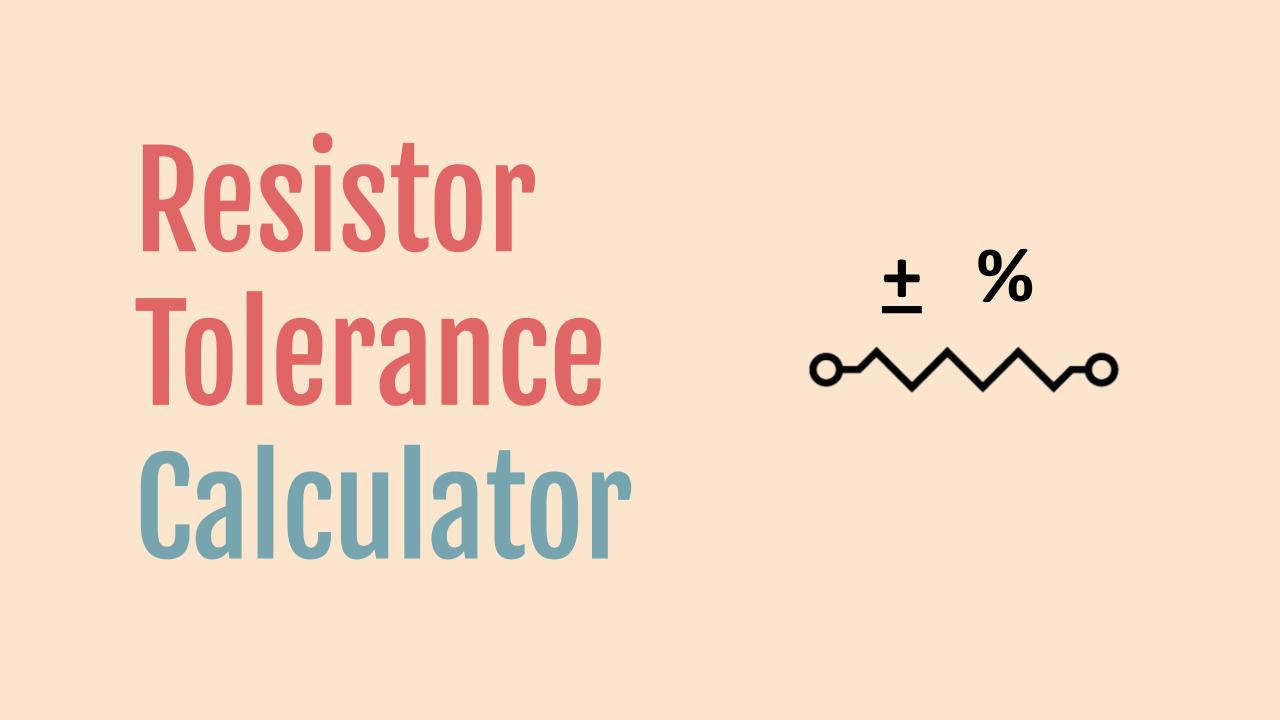This tool calculates the minimum and maximum resistance values from its percentage tolerance. This % number can be found from the resistor data sheet.
Calculator
Enter
- Value of the resistance in Ohm
- % Tolerance
The tool will provide minimum and maximum impedance values
Application
In the case of a voltage divider network, find the upper and lower ranges of the theoretical resistor values to find the output voltage range.
The voltage divider calculator can be used to find resistor values to provide a 3.6 Volt output from a 5 Volt input: R1 = 2.2 kΩ and R2 = 5.66 kΩ
If the tolerance of these is ±20%, using the calculator on this page, the max and min resistance values are:
- R1: 2.64 kΩ to 1.76 kΩ
- R2: 5.94 kΩ to 5.38 kΩ
💡 Using values 1.76 and 5.94 in the Voltage Divider tool gives the worst output voltage of 3.86 V which might exceed the max input voltage to the ADC.
Background
Resistor tolerance is a specification that indicates the allowable deviation or variation in resistance value from the nominal or specified resistance of a resistor. It is typically expressed as a percentage and helps users understand the range within which the actual resistance of the resistor may fall compared to its rated or marked value.
For example in the case of a 100-ohm resistor with a tolerance of ±5%, the actual resistance of the resistor can be anywhere within the range of 95 ohms to 105 ohms (100 ohms ± 5%). Use the calculator to find the range specified by the max and min values.
Common resistor tolerance values include:
- ±1%: Precision resistors with a very tight tolerance. These are used in applications where high accuracy is required.
- ±2%: Also considered precision resistors but with a slightly wider tolerance than ±1%. They are used in applications that require good accuracy but can tolerate a bit more variation.
- ±5%: This is a common tolerance for general-purpose resistors used in most electronic circuits. They are suitable for many applications where precise resistance values are not critical.
- ±10%: Less common but still used in some applications where less precision is acceptable, or when cost considerations are a primary concern.
- ±20%: These are used in applications where resistance values are not critical, and a wide range of values is acceptable.
It’s important to choose a resistor with the appropriate tolerance for your specific application. For critical applications requiring precise resistance values, lower tolerance resistors (e.g., ±1% or ±2%) are preferred. In contrast, for general-purpose applications where precision is not as important, ±5% tolerance resistors are commonly used due to their availability and cost-effectiveness.
💡 Note that while tolerance represents the allowed variation in resistance, it doesn’t provide information about other important resistor characteristics like power rating, temperature coefficient, or voltage rating, which should also be considered when selecting resistors for a particular circuit.
Related Calculators
- Series and Parallel Resistance
- Capacitor Tolerance
